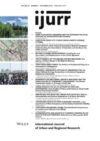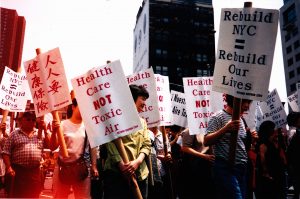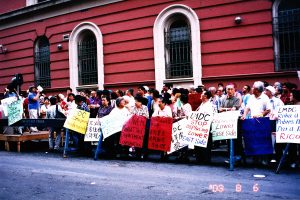By calling on us to recognize the growing impact of war on urban life, and to apply this recognition to our urban and regional research, this blog series couldn’t be more timely. I would like to both welcome the urgency of this call, and consider broadening our frame of analysis in response to it. I will suggest that we address the specificity of ‘the city at war’ together with other contingent, catastrophic events with which cities in our era must increasingly contend—from terrorist attacks to natural disasters, market crashes to the subprime mortgage meltdown. I will argue that we think more broadly and comparatively about cities in crisis.
In many ways the particular urban dynamics and impacts of war deserve their own study. Wars constitute specific kinds of urban upheaval, with especially violent and traumatic impacts for the civilians, the built environment, and ecosystems. This is increasingly the case, as urban infrastructures, from fiber-optic networks to subway systems, become weaponized “soft targets,” enabling minimal numbers of combatants to cause maximum destruction. Such instrumental, bio-political use of cities has a long history, from the invention of the car bomb to modern siege and guerilla warfare, with tactics developed in direct relation to their deployment in urban space. Today, as such “unconventional warfare” becomes conventional, the sense of constant threat justifies increased militarization at the urban scale. As cherished urban icons —skyscrapers, airports, nightclubs and market squares— become weapons of choice, cities also transform themselves into warzones. Urban scholarship, much of it published in IJURR, has been vital for taking stock of these dynamics (see especially Molotch 2003; Coaffee 2004; Graham 2012; see also Davis 2008).
Nonetheless, I would argue that while aspects of the city at war may be sui generis, the phenomenon of the city in crisis, of which wars are an example, can and should be studied more broadly. Wars and other catastrophic events often lead to urban crisis, though not necessarily so, and not for all urban residents. Understanding why they do or don’t, and for whom, opens up questions of central interest to urban and regional scholars. What is the relationship of pre-existing social and spatial conditions —including class and race based inequality, uneven development, and uneven landscapes of risk vs resiliency— to the impact and severity of catastrophic events? How is post-disaster political response influenced by the particular dynamics of these events –including their altered temporality and affectual dimensions, as well as their discursive framing in terms of root causes and solutions, primary victims and geographic boundaries? And do the political responses ultimately taken—from emergency recovery efforts to longer-term policies of resettlement and redevelopment— redress pre-existing conditions of inequality and risk, or serve to reproduce and exacerbate them? These are questions that apply broadly, as cities and communities are threatened and remade in the context of manifold forms of crisis.
Indeed, as our world becomes more urbanized, unequal, and destabilized by war, poverty, and climate change, as well as the revanchist politics of an ascendant right-wing, cities become ‘ground zero’ for a growing number of global crises, as well as for increasing rounds of often paradoxical redevelopment. They also become hotbeds for opposition, organizing, and alternative political visions. It is incumbent on us as urbanists and urbanites to learn from “crisis” —its dynamics, and its politics— if we hope to understand the contemporary city itself.
Comparing the Incomparable
In our recent book, Crisis Cities: Disaster and Redevelopment in New York and New Orleans (Gotham and Greenberg 2014), my co-author Kevin Fox Gotham and I sought to compare the urban impacts of “9/11” and Hurricane Katrina with the above questions in mind. One disaster, on September 11, 2001, was set off by terrorist attacks on New York City, when two hijacked commercial airplanes took down the World Trade Center, causing over 3000 deaths, and untold economic damage to the nation’s financial center. 9/11 came to epitomize the weaponizing of a city, its infrastructure, and its global brand, as well as the symbolic power to be achieved via such an act (Greenberg 2003). A second disaster, between August 23 and 31, 2005, was Hurricane Katrina’s flooding of New Orleans. Here a much smaller, poorer, majority African-American city was devastated on a much larger scale by a natural disaster, with between 1-2000 people (the final number remains unknown) killed by drowning, dehydration, exhaustion and violence, and with thousands more permanently displaced. Beyond sheer magnitude and urban locale, these catastrophic events would seem to be incomparable (as we heard from one publisher when we first proposed the book).
Yet, when we expanded the historic and spatial frame of our study beyond the immediate moment and site of the disasters, similarities with and even direct links between post-Katrina New Orleans and post-9/11 New York City abounded. This included—in the post-disaster period— the early lobbying by business coalitions, together with city and state officials, for waivers of the low-income, public benefit, and public oversight restrictions that governed U.S. disaster aid. Post-9/11 Lower Manhattan waivers were cited as precedent for post-Katrina New Orleans, while the non-transparency of the Louisiana Recovery Agency (LRA) was modeled on the Lower Manhattan Development (LMDC) Corporation. Both agencies framed the crisis in terms that justified channeling multi-billion dollar federal aid packages and tax breaks towards economic redevelopment and rebranding efforts that benefited local corporations, financial firms, real estate developers, and high-end residential neighborhoods. In a process we called uneven redevelopment, the disasters’ neediest and hardest hit victims were largely excluded, despite considerable political organizing on their part. This included small business owners and residents of low-income neighborhoods like Chinatown and the Lower East Side in New York, and the Lower Ninth Ward in New Orleans, and lead to longer-term crises of displacement, economic decline, and poor health for these communities (Gotham and Greenberg 2008). Moreover, the fact that the latter neighborhoods were so vulnerable in the first place had to do with similar rounds of crisis and uneven redevelopment in the pre-disaster period, and the uneven landscapes of risk vs. resilience these left behind.
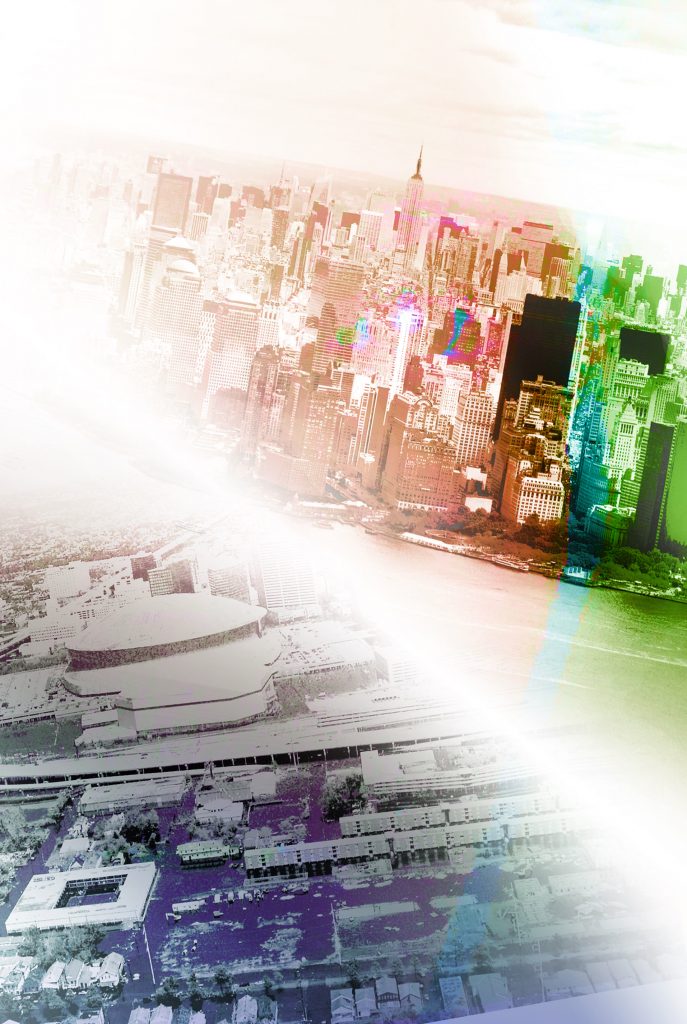
Comparing the Incomparable. Photo: Julie Rogge
And so we found that widely divergent forms of disaster, under the right historic circumstances, and given the right response, can trigger larger-scale crises and usher in a highly imbalanced form of urbanization. The politics governing this response in these moments of simultaneous moments of rupture and intervention (Hay 1996) are also open-ended, leading to surprising coalitions with the potential to push urbanization in a radically different direction. But doing so is hard, and learning from the politics of past disasters crucial.
Based on these findings, we sensed a need to move beyond the case study methods of disaster research prevalent at the time, and toward broader, comparative-historical approaches. This also caused us to question the lack of attention to the transformative role of catastrophic and contingent events within urban studies, as well as the lack of attention to urban and regional frameworks within the social science of disaster. Thus we worked to combine an “eventful temporality,” attuned to the particularity of moments of rupture and breakdown (see Sewell 1996), with a critical and comparative urban studies, attuned to the dynamics of space and power (see e.g. McFarlane 2010). In what follows I offer some insights from both sides of this analysis.
Dueling Temporalities
For some, “it was as if time stood still.” In ethnographies and personal memoirs of disaster, people recount the sense that time itself, in its standard clock form, is profoundly altered or stopped altogether by the enormity of events. Consumed by responding to urgent needs and navigating a transformed urban landscape, temporal rhythms are suspended, replaced by those of survival, aid, and mourning. This suspension of ‘business as usual’ can actually feel liberating, opening possibilities for new degrees of self-awareness, solidarity, and connection. And as the disaster itself exposes histories of injustice and poor planning, new forms of critical consciousness and desires for alternative urban futures can take root and begin to develop.
Yet meanwhile, for others, time appears to speed up in the midst of crisis. In Crisis Cities we found in the earliest post-disaster moments, newly formed elite coalitions like LMDC and LRA making major, consequential decisions. This included about how “crisis” and its primary victims were to be framed; the laws and bodies that were to govern short- and long-term redevelopment; the sites and type of rebuilding to be prioritized —e.g. those oriented towards tourism, finance, and high-end residential development, albeit with a “sustainable” and “resilient” twist. Operating under what Oscar Sosa Lopez (forthcoming) has called a “politics of immediacy,” crisis frames legitimated a race to channel funds into major projects and reforms with little scrutiny, testing, or debate, yet with powerful, long-term effects.[1]
Distinctive politics emerge amidst these dueling temporalities, and their associated affective states. While grassroots “crisis organizing” arose early on, it tended to be locally focused and oriented towards mutual aid (Luft 2009). Members of these groups recalled it felt “inappropriate” in a period of mourning, and given limited resources, to get “too political too early” and contest the overall path of redevelopment. This sentiment was not shared by those with the requisite resources and networks to seize the moment. Early action by the latter groups left the time-consuming processes of coalition building further behind. Grassroots political energies became consumed by “following the money” already diverted, navigating bureaucracies already erected, and contending with policies already “set in stone.” Thus, whether struck by war or other forms of disaster, the chaos of crisis cities upends time itself. Grassroots organizing in the midst of this is vitally important yet challenging, requiring thinking, feeling, and acting on two temporal levels simultaneously. [2]
Uneven Spatialities
In crisis cities, the production of space is upended as much as the experience of time. Under pre-existing conditions of capitalist urbanization, disasters lay bare long pre-histories of uneven development . Uneven redevelopment only compounds these inequities. Following 9/11 and Katrina, poor and low-income, majority non-white neighborhoods and small businesses faced far greater physical and economic risk prior to the events – lacking adequate insurance, savings, political connections, transportation, and healthcare. More affluent, majority white neighborhoods and large businesses had greater resiliency, due to the inverse of these same factors. As noted, these uneven landscapes were themselves a legacy of previous rounds of crisis: for both cities, the fiscal crises and austerity of the 1970s.
Thus inequitable federal aid exacerbated existing socio-spatial inequalities and widened disparities in risk vs resilience. There were significant local differences. New York saw the shuttering of Manhattan’s last remaining industrial district, in Chinatown, as well as untreated health effects for workers and first responders. New Orleans’ “warzone” was more extreme even than post-9/11 New York — including tank patrols by Iraq veterans, “refugee camps” throughout the South, and outdoor prisons modeled on Guantanamo. Yet again, similarities abounded. In the “New Lower Manhattan” and “New Orleans Miracle,” rebound was seen in amenity-rich neighborhoods with sky-rocketing property values and whiter, wealthier demographics. Those pushed out were disproportionately low-income, non-white, with more children. In New York, this meant moves into outer boroughs—e.g. from Chinatown to Borough Park. For the poorest New Orleanians, it meant moving from the city all together, or remaining in neighborhoods that 11 years hence look like they were just hit by the storm.
In the aftermath of wars and floods, the displaced learn invaluable lessons: about everyday survival, forms of socio-spatial inequality laid bare, the potential of new forms of solidarity to shake up business as usual, and how the power politics of rebuilding can assert business as usual once again. Unfortunately, being displaced, they rarely get to share these experiences.
Demonstrations following 9/11 by Lower East Side Chinatown Consortium, for environmental justice and equitable redevelopment. LESCC was one of many coalitions representing new solidarities across lines of race, language, and neighborhood that arose in this period. Photo: Chinese Staff and Workers Association.
Rights to the post-Crisis City
Crisis organizers sought to change this lack of historic memory following Hurricane Sandy in 2012. Just weeks after the storm, they organized teach-ins featuring “veterans” of 9/11 and Katrina (with some survivors of the latter flying in to lend a hand). Many were also veterans of a more recent crisis: the market crash of 2008, and subsequent bailout of 2010, which sparked the Occupy Wall Street protests of 2011 in Lower Manhattan (in Zucotti Plaza, directly beneath the offices of the LMDC). The main lessons they all shared were remarkably similar: Be wary of so-called “recovery,” it may actually set off a new disaster. Get political early, consolidate resources through powerful coalitions, and demand a seat at the table where the frameworks defining the disaster and priorities driving redevelopment are set. Use the rupture of the current crisis for a different kind of intervention: a just rebuilding and a “right to the city”—whether that entails a right to return to damaged homes, and/or to have a say in the path and priorities of future, post-crisis urban development. [3] In the case of post-Sandy New York City, the political upsurge can be argued to have played a major role in electing a new, more progressive mayor, and in placing demands for a “people’s recovery” at the front of his agenda.
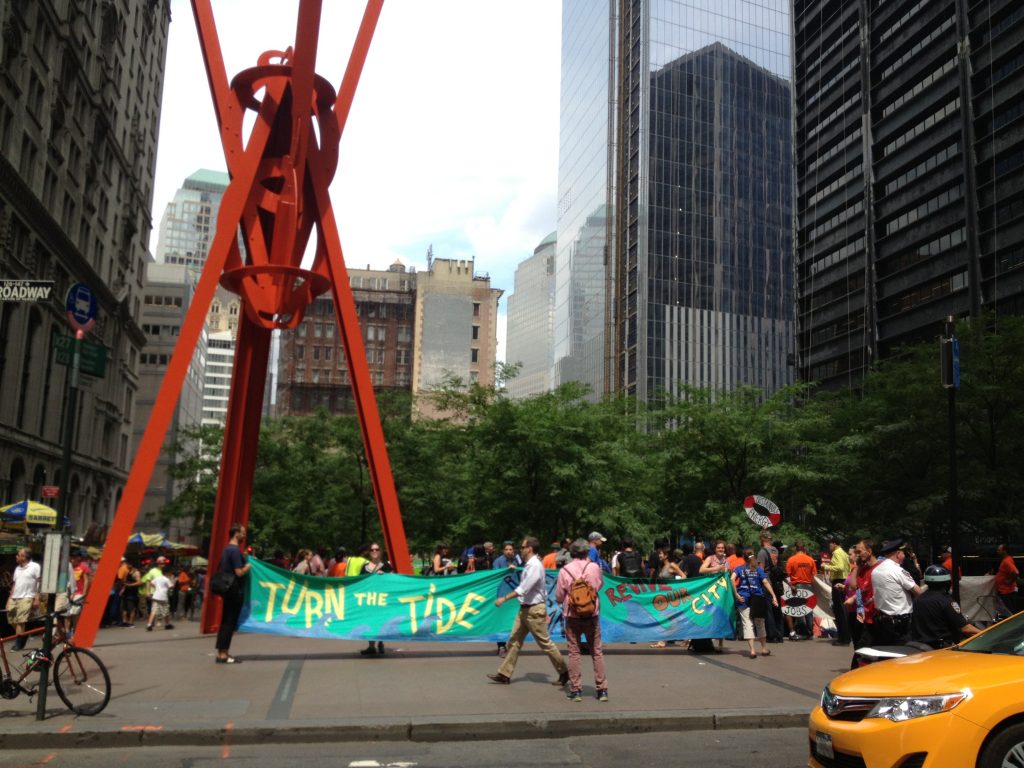
Post-Sandy March and Rally, Zucotti Plaza, in the shadow of post-911 Redevelopment
Photo: Miriam Greenberg.
What more could we learn from those facing the aftermath of urban disasters around the world today, in Aleppo, Baghdad, Sao Paulo, Paris? Clearly there are important differences in each context, perhaps nowhere more so than Syria and Iraq, where the scale of devastation caused by war is unlike anything experienced in the United States or Latin America, or in Europe since World War II, and where the “post-crisis” period is nowhere in sight.
And yet, we find common ground between cities facing numerous forms of disaster, of different magnitudes, in disparate locales. History and geography matter in terms of the neighborhoods, regions, and communities most affected. Decisions made in the moment and using the frame of “crisis,” and the politics governing these decisions, will have long-term, transformative effects. We see increasingly entrenched efforts to exploit disasters of all kinds, and to present militarization and luxury redevelopment as keys to the “resilient city.” Meanwhile right to the city and right to the territory frameworks also drive demands in cities, informal settlements, and refugee camps around the world—for environmental and economic justice, racial and ethnic inclusion, and democratic participation in redevelopment and city-making. In this era of widening inequality and revanchism, as urban crises become more likely, new theoretical and methodological tools addressing their temporality and spatiality, politics and multiple potentialities, will be all the more vital.
Miriam Greenberg is Professor of Sociology at University of California Santa Cruz. Her research and teaching have been focused on critical urban, cultural, and environmental studies, and most recently, the housing crisis in California. She is the author of Branding New York: How a City in Crisis was Sold to the World (Routledge, 2008), Crisis Cities: Disaster and Redevelopment in New York and New Orleans (Oxford, 2014, with Kevin Fox Gotham), and forthcoming,The City is the Factory: New Solidarities and Spatial Strategies in an Urban Age (Cornell, 2017, with Penny Lewis)
All essays on The City at War: Reflections on Beirut, Brussels and Beyond
The City at War
Rivke Jaffe
When the Pursuit of National Security Produces Urban Insecurity
Saskia Sassen
Diversifying Urban Studies’ Perspectives on the City at War
Mona Harb
A Balanced Response? The Quest for Proportionate Urban Security
Jon Coaffee
War, Crisis Cities, and Urban Research
Miriam Greenberg
Published online 2017
Related IJURR articles on the City at War
Urban Security from Warfare to Welfare
Jennifer S. Light
Introduction: Symposium on Urban Terror
Harvey Molotch
Cities and the ‘War on Terror’
Stephen Graham
Security or Safety in Cities? The Threat of Terrorism after 9/11
Peter Marcuse
When Life Itself is War: On the Urbanization of Military and Security Doctrine
Stephen Graham
Guerrilla‐style Defensive Architecture in Detroit: A Self‐provisioned Security Strategy in a Neoliberal Space of Disinvestment
Kimberley Kinder
© 2017 THE AUTHOR. INTERNATIONAL JOURNAL OF URBAN AND REGIONAL RESEARCH, PUBLISHED BY JOHN WILEY & SONS LTD UNDER LICENSE BY URBAN RESEARCH PUBLICATIONS LIMITED
This is an open access article under the terms of the Creative Commons Attribution-NonCommercial-NoDerivs License, which permits use and distribution in any medium, provided the original work is properly cited, the use is non-commercial and no modifications or adaptations are made.
ALL ESSAYS ON The City at War: Reflections on Beirut, Brussels and Beyond
The City at War
Rivke Jaffe
When the Pursuit of National Security Produces Urban Insecurity
Saskia Sassen
Diversifying Urban Studies’ Perspectives on the City at War
Mona Harb
A Balanced Response? The Quest for Proportionate Urban Security
Jon Coaffee
War, Crisis Cities, and Urban Research
Miriam Greenberg
Download this essay as PDF.
